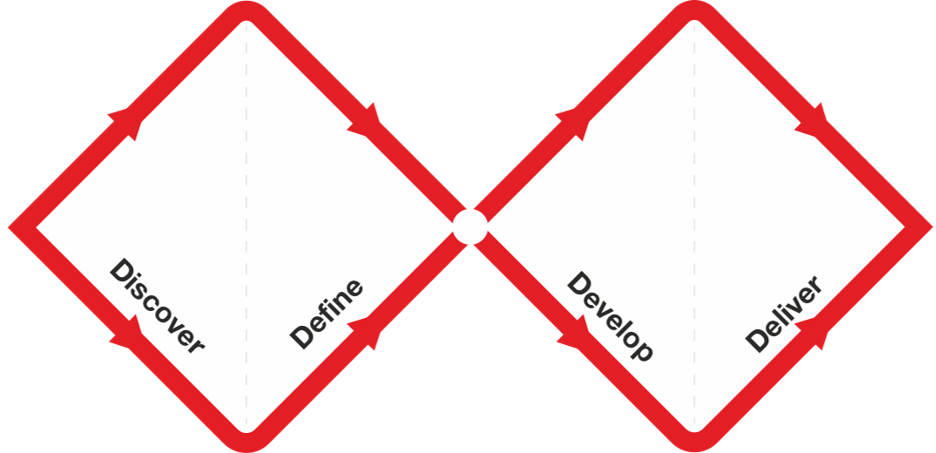I had this in draft for a very long time, especially after a conversation with one of my clients… did you ever notice how the Double Diamond process principle applies perfectly to modern engineering organisations?

The Double Diamond is a standard description of the design process, created by the Design Council in 2005. It represents the most general and applicable visualisation of a typical exploration and resolution of a given issue, deconstructing the thought process and defining the journey one does to get to the final result.
Now…this applies, word-by-word, to what we do on a daily basis. Think about this: your teams need to undertake a certain effort. What would they do?
The first step is embarking on a discovery exercise. This is not a linear endeavour, but rather a wide and large collection of data points and information required in order to have a better understanding of what’s going to happen. You will start at high-level, and narrow down as needed.
All this information alone is pointless and potentially confusing. The teams will then start defining what actually needs to happen, and how. The end result of this is a (relatively) clear view of the required work to be carried out. It brings everyone on the same page and people can start their low-level processes.
The same cycle repeats between implementation and delivery. If you are a developer, you are going to implement things your way, however the Peer Review process will suggest changes which might or might not align with what you had in mind originally.
This is the reining-in of the divergence the first phases of the Double Diamond, and they are brought to an agreed, final state where all the parties are ready to either proceed or move on. The process itself never ends, it’s highly repeatable, and it always delivers the same outcome. You are in control of the accuracy and the level of agreement between the parties.
The Design Council distilled the following framework for applying the Double Diamond:
Discover. The first diamond helps people understand, rather than simply assume, what the problem is. It involves speaking to and spending time with people who are affected by the issues.
Define. The insight gathered from the discovery phase can help you to define the challenge in a different way.
Develop. The second diamond encourages people to give different answers to the clearly defined problem, seeking inspiration from elsewhere and co-designing with a range of different people.
Deliver. Delivery involves testing out different solutions at small-scale, rejecting those that will not work and improving the ones that will.
Does it sound familiar at all?